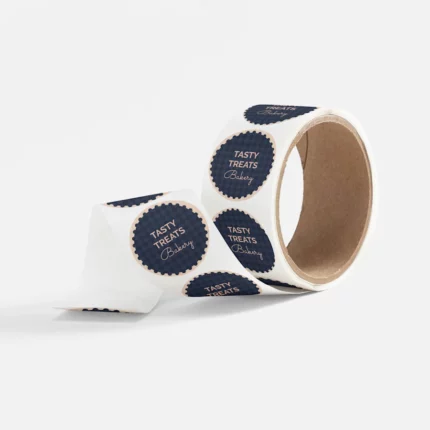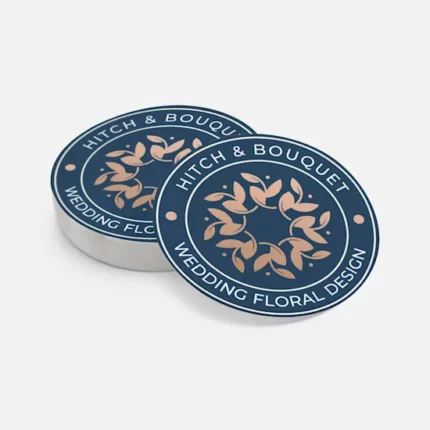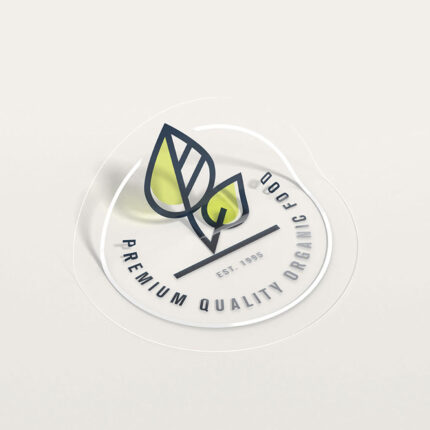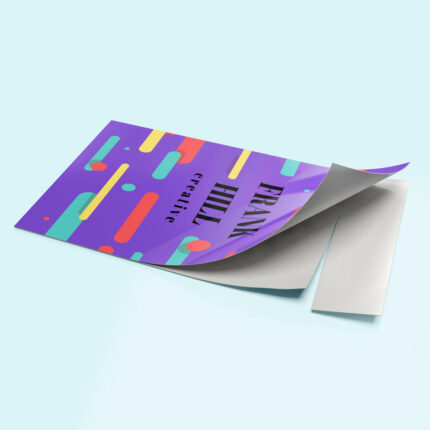Embossing is a printing technique that creates a raised or three-dimensional effect on a printed surface. It involves pressing a special die onto the paper or cardstock, which squeezes the fibers of the material and creates a raised pattern or design. This technique is often used to add texture and visual interest to printed materials, such as business cards, invitations, and packaging. Embossing can be done with or without ink, depending on the desired effect. When done without ink, it is known as “blind embossing,” and when done with ink, it is called “ink embossing.”
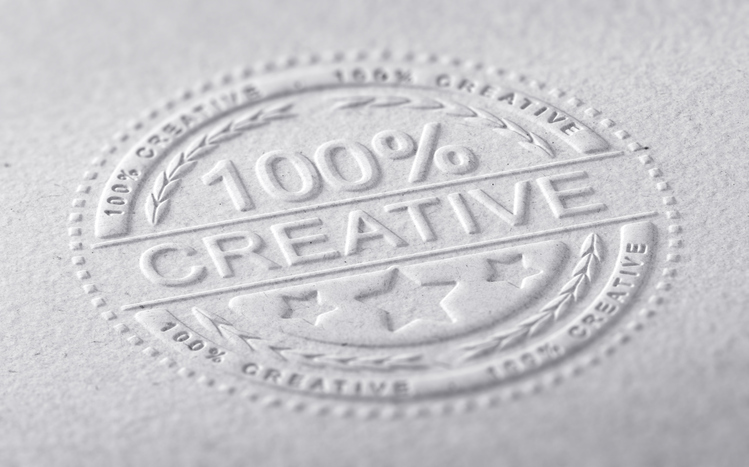
Process of Embossing
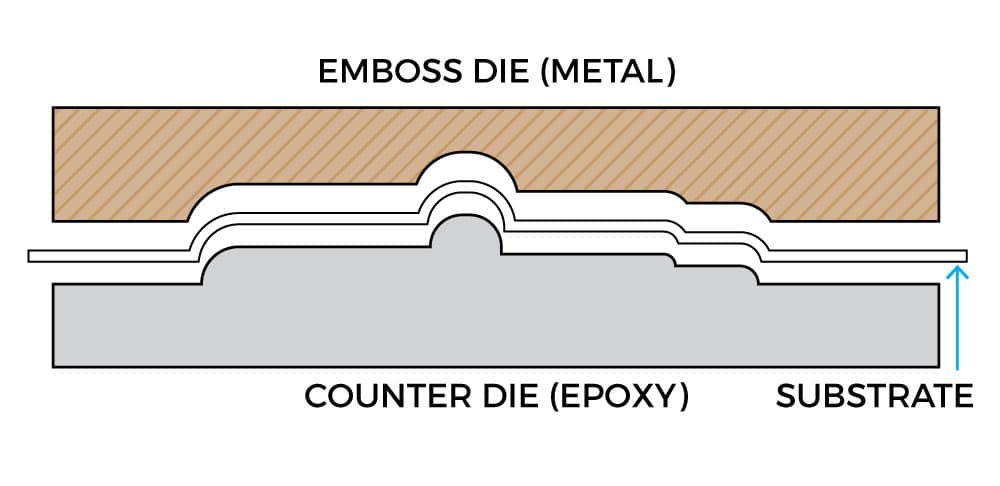
Embossing is a process that involves applying pressure to paper or cardstock to create a raised design or pattern. Here’s a step-by-step explanation of how embossing is typically done:
- Design Creation: The first step is to create the design or pattern that will be embossed. This can be done using specialized software or by hand.
- Die Creation: Once the design is finalized, a metal die or plate is created. This die is typically made from brass or copper and is engraved with the desired design.
- Material Preparation: The paper or cardstock that will be embossed is prepared by adding a layer of adhesive or heat-activated powder to the surface. This layer helps the paper or cardstock adhere to the die during the embossing process.
- Die Placement: The prepared paper or cardstock is placed on top of the die, with the adhesive or powder side facing down.
- Pressing: The die and paper are then placed between two metal plates in a specialized embossing press. The plates are heated, and pressure is applied to the paper and die. This pressure causes the paper to conform to the shape of the die, creating a raised design.
- Cooling: After the embossing process is complete, the paper is allowed to cool. This helps the embossed design set and ensures that it will retain its shape.
- Finishing: Once the embossing is complete, the paper can be further customized by adding ink or foil to the raised design. This can create a striking contrast and enhance the overall appearance of the embossed piece.
Overall, embossing is a versatile and effective way to add texture and visual interest to printed materials. It can be used to create everything from simple raised patterns to intricate designs, and it is often used in conjunction with other printing techniques to create unique and eye-catching pieces.
Practical Applications of embossing
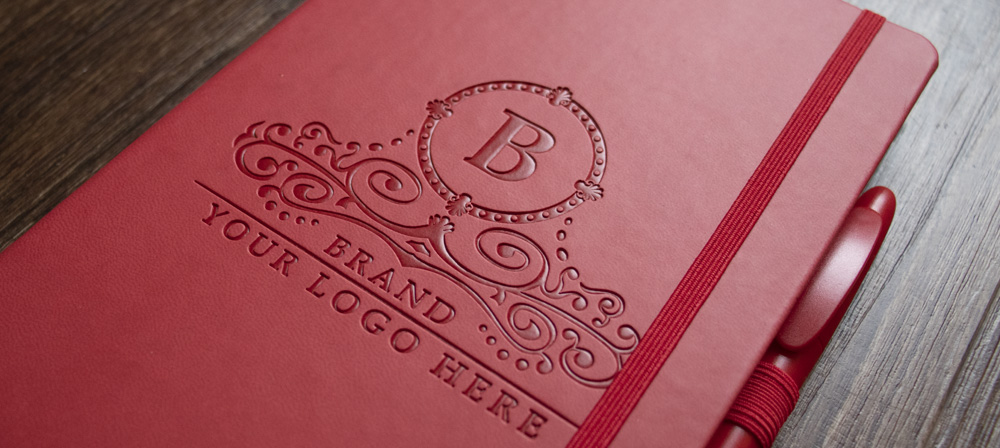
Embossing is a versatile technique that can be used in a wide range of applications. Here are some practical examples of how embossing is used in various industries:
- Business Cards: Embossed business cards can create a striking first impression and help a card stand out from the crowd. The raised design adds texture and visual interest, making the card more memorable.
- Invitations: Embossing is often used on wedding invitations, party invitations, and other special event announcements. The raised design adds a touch of elegance and sophistication, setting the tone for the event.
- Packaging: Embossing is commonly used on product packaging to create a premium look and feel. The raised design can enhance the brand image and make the product more appealing to consumers.
- Stationery: Embossed stationery, such as letterheads and envelopes, can add a touch of class to business correspondence. The raised design can also help reinforce a brand’s identity and make a lasting impression.
- Book Covers: Embossing is often used on book covers to create a tactile and visually appealing design. The raised elements can add depth and dimension to the cover, making it more attractive to readers.
- Labels: Embossed labels can be used on a wide range of products, from wine bottles to cosmetics. The raised design can help the label stand out on the shelf and make the product more appealing to consumers.
- Gift Cards: Embossed gift cards can add a personal touch to a gift and make it more memorable. The raised design can also create a sense of anticipation and excitement when the recipient receives the card.
Overall, embossing is a versatile and effective technique that can be used in a wide range of applications. Whether it’s adding a touch of elegance to a business card or creating a premium look for product packaging, embossing can help elevate the overall design and make a lasting impression.
Blind Embossing vs Ink Embossing
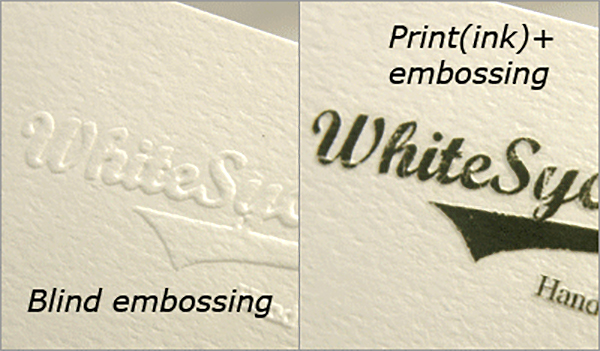
Blind embossing and ink embossing are two techniques used to create raised designs on paper or other materials. While they both create a tactile effect, there are some key differences between the two methods.
Blind Embossing:
- Blind embossing is a technique where a raised design is created on paper or other material without the use of ink or foil. Instead, a die is used to press the design into the material, creating a raised effect.
- Blind embossing is often used for subtle, elegant designs that add texture and dimension to a printed piece. It is commonly used on business cards, invitations, and other printed materials where a tactile effect is desired.
- Because blind embossing does not use ink or foil, it is a more cost-effective option than ink embossing. It is also a more environmentally friendly option, as it does not require the use of additional materials.
- Blind embossing can be combined with other printing techniques, such as letterpress or foil stamping, to create unique and visually striking designs.
Ink Embossing:
- Ink embossing, also known as color embossing or inked embossing, is a technique where a raised design is created on paper or other material using ink or foil. The design is first printed onto the material using ink or foil, and then a die is used to press the design into the material, creating a raised effect.
- Ink embossing is often used for bold, vibrant designs that stand out on the page. It is commonly used on packaging, labels, and other printed materials where a high-impact design is desired.
- Because ink embossing uses ink or foil, it is a more expensive option than blind embossing. However, it can create a more visually striking effect and can be used to create designs with multiple colors.
- Ink embossing can also be combined with other printing techniques, such as offset printing or digital printing, to create unique and visually striking designs.
In conclusion, blind embossing and ink embossing are two techniques used to create raised designs on paper or other materials. While they both create a tactile effect, they have some key differences in terms of cost, environmental impact, and design options.
If you have any questions about printing, feel free to reach out to us at 718-928-6888 or submit our quote request form. We’re here to assist you in any way we can.
Take care!
Jeff @ New York Printing Center

